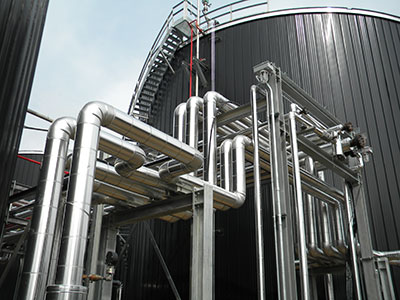It’s no secret that fire safety is at the top of my mind when I’m selecting insulation for industrial tanks. Concerns around fire hazards can overwhelm even seasoned engineers.
Foam glass wool is naturally fire resistant because its composition is mainly inorganic. Foamed glass cannot burn, melt, or contribute to fire spread. It resists flames, and when exposed to them, it does not release toxic smoke.

When you’re tasked with protecting a chemical tank or a cryogenic vessel, you want more than just “good enough” fire protection. I’ve learned that the safest solution is often not the most obvious one, and understanding exactly how foam glass responds in extreme scenarios is crucial. Let’s break down the facts about foam glass wool, and why its fire resistance matters to you and your facility’s safety.
Is FOAM GLAsS flammable?
Fire risk keeps engineers up at night. Regulations get stricter every year, and materials that pass the test are the only way forward if you want security and peace of mind.
Foam glass is not flammable. It is made entirely from glass that’s been expanded, which means it doesn’t catch fire, ignite, or support combustion. This material even withstands prolonged flame exposure without degrading.

When I first came across foam glass as a solution, I wanted proof before recommending it. In tests—even with direct exposure to a torch—the foam glass will only discolor at the hottest part, but never burns. It doesn’t feed flames, so it won’t accelerate a fire. That hard-won peace of mind is one reason I keep choosing it for our most critical installations. Unlike many alternatives, there’s simply no fuel for a fire inside the glass matrix. That fact alone makes it an ideal choice whenever fire safety is the primary specification.
Is foam glass wool fire-resistant?
A burning question for every engineer: Can my insulation hold up under real fire? I learned early that not all “fire-resistant” labels are built the same.
Foam glass wool meets the strictest fire resistance standards globally. It can withstand temperatures above 500°C without deforming or releasing hazardous smoke, keeping facilities and workers safer.
When I walk through our manufacturing floor, I see foam glass holding firm in the face of everything we can throw at it. It never loses its structure, even in a flame jet test. You might see other insulations melt or release thick, choking fumes. Foam glass wool just stands firm—no smoldering, no dripping, no dangerous off-gassing. For me, that means not only compliance with EU fire safety codes (such as EN 13501-1 or ASTM E84), but direct confidence that our tanks remain safe no matter what happens outside. When I talk to procurement or safety teams, all agree: foam glass wool provides the most reliable defense for any high-risk tank.
What foam glass is fire-resistant?
Engineers need specifics. I’ve learned that knowing what to ask about a product’s composition or certification saves headaches later, especially when fire safety is involved.
All foam glass insulation products are inherently fire-resistant. Look for certified variants such as EN13501-1 A1 or UL-rated foamed glass, which guarantee high temperature stability and non-combustible performance in both industrial and commercial applications.
Foam glass is produced by fusing silica sand at high temperatures, which means it shares the same non-combustible properties as regular glass. What changes in each type is the size and density of the bubbles, not the fire resistance. For large tanks, denser blocks or slabs work best. In locations where direct flame exposure or intense radiant heat is expected, I choose EN 13501-1 A1 rated foam glass or other types designed for fire containment zones. These offer tested guarantees that extend far beyond basic compliance—they are the backbone of our tank fire protection designs.
What type of insulation is most fireproof?
The search for the most fireproof insulation out there isn’t just technical—it’s personal when lives and assets are on the line. I don’t take shortcuts.
The most fireproof insulation types are foam glass, mineral wool (rock wool), and ceramic fiber. Among these, foam glass offers best-in-class fire resistance with zero fuel for combustion and long-term stability in corrosive industrial settings.

On our projects, foam glass often comes out on top for fire protection. Mineral wool is also very strong, but can bleed tiny fibers or lose shape under intense heat. Ceramic fiber is best for extremely high temperatures, though it’s less robust physically, especially in chemical environments. For tank insulation where structural strength, fire safety, and chemical resistance must all align, foam glass delivers. I’ve overseen installations where it provided full life-cycle performance, keeping tanks safe from ignition and heat transfer year after year.
Conclusion
Foam glass wool is the fire-resistant insulation that provides reliable protection for tanks, resisting flames, heat, and fire-related damage across diverse industrial environments.

